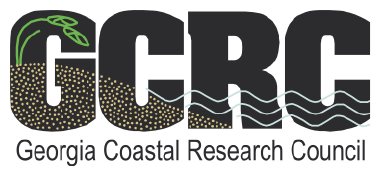This report provides information on the water quality and biological resources of Fort Pulaski National Monument as well as regional potential pollution sources. Although there are no pollutant sources at Fort Pulaski itself, both point and nonpoint pollutant sources can be found nearby that have the potential to affect the park’s water resources.
The report summarizes the potential for impairment to the various water resources associated with the park. Indicators considered include contaminants and other indicators of poor water quality; population effects in terms of harvest and invasive species; and habitat disruption. The largest water quality problem identified was low dissolved oxygen in the Savannah River Estuary due to the large amount of organic material released into the water, coupled with stratification. The report also lists a number of recommendations, which are described in detail.
Caroline McFarlin and Merryl Alber. 2005. Assessment of Coastal Water Resources and Watershed Conditions at Fort Pulaski National Monument, Georgia. National Park Service, Water Resources Division, Technical Report NPS/NRWRD/NRTR- 2005/345.
Coastal Watershed Condition Assessment of Fort Pulaski National Monument
We recently completed an assessment of Fort Pulaski National Monument for the Water Resources Division of the National Park Service. The report provides information on park resources, water quality and impairments, and other issues of concern. Although there are no real sources of pollutants at Fort Pulaski itself, both point and nonpoint sources of pollutants can be found nearby that have the potential to affect its water resources. We identified nutrients and contaminants as currently existing problems. A majority of nutrient samples were classified as either fair or poor, and there is evidence for elevated contaminants (primarily arsenic and PAHs) in sediment and animal tissue taken from both tidal creeks and the main channel of the Savannah River. Dissolved oxygen was identified as a potential problem due to the amount of organic material and nutrients associated with industrial activity. Fecal bacteria concentrations are low and not considered a problem. Continued water quality monitoring at the Park is particularly important in order to note any change occurring with the Savannah Harbor Expansion Project. The report provides a list of recommendations for additional observations that would allow us to better evaluate coastal water resources.
Caroline McFarlin and Merryl Alber. 2007. Coastal Watershed Condition Assessment of Fort Pulaski National Monument. Proceedings of the 2007 Georgia Water Resources Conference, March 27–29, 2007, University of Georgia.
This report provides information on the water quality and biological resources of Cumberland Island National Seashore as well as regional potential pollution sources. Although there are no pollutant sources at Cumberland Island itself, both point and nonpoint pollutant sources can be found nearby that have the potential to affect the island’s water resources.
The report summarizes the potential for impairment to the various water resources associated with the island. Indicators considered include contaminants and other indicators of poor water quality; population effects in terms of fish harvest and invasive species; and habitat disruption. The largest potential water quality problem identified was low dissolved oxygen in Cumberland Sound, but there are also potential problems associated with nutrients and contaminants.
There are a number of additional and/or continuing observations that would be useful to have to better evaluate coastal water resources in the region. These include improved access to existing data; continued monitoring of water conditions (particularly in light of impending development in the area); and selection and monitoring of sentinel organisms in different habitat types that could act as indicators of degrading water quality.
Merryl Alber, Janice Flory, and Karen Payne. 2005. Assessment of Coastal Water Resources and Watershed Conditions at Cumberland Island National Seashore, Georgia. National Park Service, Water Resources Division, Technical Report NPS/NRWRD/NRTR- 2005/332.
Water Quality Conditions near Cumberland Island, Georgia
This paper describes water quality information compiled as part of a report to the National Park Service on the water resources and habitat conditions of Cumberland Island National Seashore. Observations of nutrients, bacteria, dissolved oxygen, and contaminants in Cumberland Sound were obtained from state and federal agencies (particularly data collected by the Coastal Resources Division (CRD) of the Georgia Dept. of Natural Resources) and from the literature. Dissolved nutrient concentrations (orthophosphate, total dissolved phosphorus, nitrate plus nitrite) were considered fair to good according to the U. S. Environmental Protection Agency (EPA) National Coastal Condition Report II criteria. Bacterial concentrations (fecal coliform) did not show evidence of problems. Dissolved oxygen levels were sometimes critically low, particularly during summer: measurements made by CRD at 20 stations between 2000 and 2004 were less than 4 mg/L 18% of the time. Although it is not clear the extent to which this is a natural phenomenon, these low values warrant continued observation. This review also suggests potential problems in terms of mercury and several pesticides (i.e. dieldrin, lindane, 4,4′-DDD), which may be due to legacy contamination of the sediment or to continued input from both point and non-point sources. Continued monitoring of water conditions (particularly dissolved oxygen) and forthcoming observations of contaminant concentrations in organisms and sediment taken as part of the EPA National Coastal Assessment Program will enable better evaluation of coastal water resources in the region.
Merryl Alber, Janice Flory, and Karen Payne. 2005. Water Quality Conditions near Cumberland Island, Georgia. Proceedings of the 2005 Georgia Water Resources Conference, April 25-27, 2005, University of Georgia. (ed.) Kathryn J. Hatcher.
